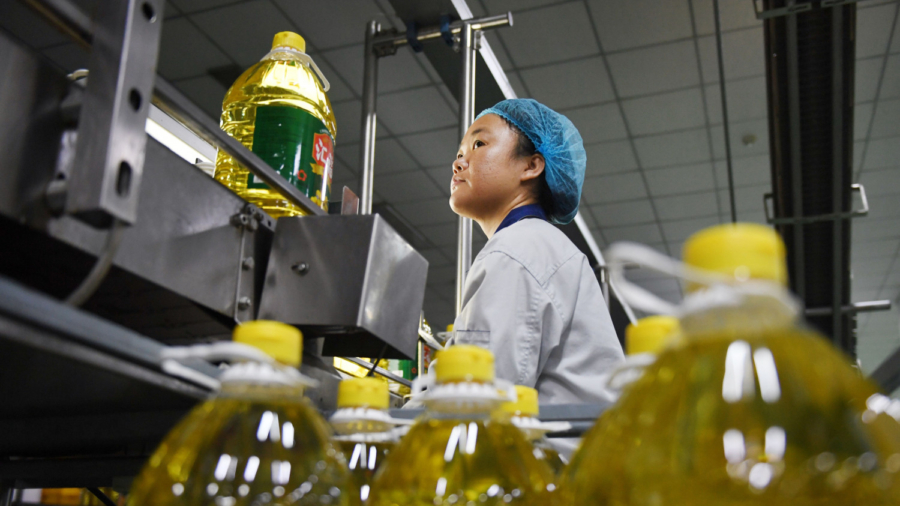News Analysis
The worry that the United States and China will engage in a protracted, full-on trade war may be subsiding, even with the continued doom-and-gloom narrative in mainstream media.
Last week, Beijing proposed 10 percent tariffs on $60 billion of U.S. products, which represents the majority of China’s imports from the United States. This was in retaliation for President Donald Trump going ahead with duties on $200 billion of Chinese goods which went into effect earlier this month.
After the president threatened further tariffs on another $267 billion of Chinese-made goods, China again vowed retaliation.
But so far, there are few details of what that retaliation would entail. Instead, the markets are betting that China may be close to capitulating.
Less Combative Rhetoric
Behind closed doors, there are signs that China may be ready to call a cease-fire. After so far matching U.S. tariffs dollar-for-dollar, Beijing is running out of dollars to tax.
“They don’t know what to do,” Raúl Hinojosa-Ojeda, a trade specialist at UCLA who has been traveling around China recently speaking with businesspeople and officials, told The New York Times. “They worry that the tit-for-tat model is playing into Trump’s hands.”
China plans to lower tariffs from the majority of its trade partners in October, according to a Sept. 20 Bloomberg report that cites anonymous officials. This would mirror Chinese Premier Li Keqiang’s statement Sept. 19 that China would look to reduce tariffs, though without offering specifics.
China’s plan isn’t to appease the United States per se, but to reduce the economic burden on Chinese consumers. So far, it’s unclear if any of the planned reduction in duties would affect U.S. products. World Trade Organization rules dictate that tariff reduction must be applied to all countries equally, so China could selectively reduce tariffs on products that it doesn’t import in large quantities from the United States.
The announcement wasn’t completely surprising. As of the end of 2017, China’s average Most Favored Nation (MFN) tariffs rate was 9.8 percent, one of the highest among developed countries.
The United States is also open to negotiations. While no formal talks are planned, a White House official told Reuters that “I am still optimistic that there is a positive way forward, and the president wants us to continue to engage to try to achieve a positive way forward.”
Recent stock market movements also indicate a potential trade war cease-fire. The Shanghai Composite Index, the country’s benchmark stock index, rose 2.5 percent on Sept. 21. It ended last week up 4.3 percent, the best week in two years. The S&P 500 was also up around 0.8 percent during the week.
The president of one of the world’s biggest investment firms also is optimistic that the trade war will resolve itself. Jon Gray, president of the Blackstone Group, told CNBC, “My optimism comes from the fact it’s in the parties’ interest that if we stop trade and investment between these two big countries, it wouldn’t be good.”
Lessons for China
China’s strategy was to enact agricultural tariffs—corn, soybeans, and meats—long enough to hurt Trump’s voter base in the U.S. heartland. But it appears to have underestimated support for Trump’s foreign policy towards China.
The drawn-out trade war has confirmed a bleak reality for Beijing: Existing tariffs may be more permanent than previously thought.
Democrats have opposed most of Trump’s agenda since his election, but his views on China have received broader support. Even if Trump isn’t re-elected in 2020, it’s no guarantee that today’s hawkish trade policy towards China would soften.
If China does capitulate to the United States in the current trade war, there are longer-term implications for U.S. businesses. In the long run, U.S. businesses and farmers could theoretically lose some business.
Mu Yan Kui, an executive at a major Chinese soybean importer told Reuters that a potential Chinese decision to slash soymeal content from pig feed could decimate Chinese soybean imports from the United States. Cutting soybean content to 12 percent from 20 percent would save 27 million metric tons of soybeans, equating to more than 80 percent of Chinese imports from the United States.
Outside of agriculture, China is also investing in domestic technology firms developing semiconductors, robotics, and automation technologies.
If nothing else, the trade dispute solidifies China’s conviction that it must pare its reliance on American business.
From The Epoch Times


